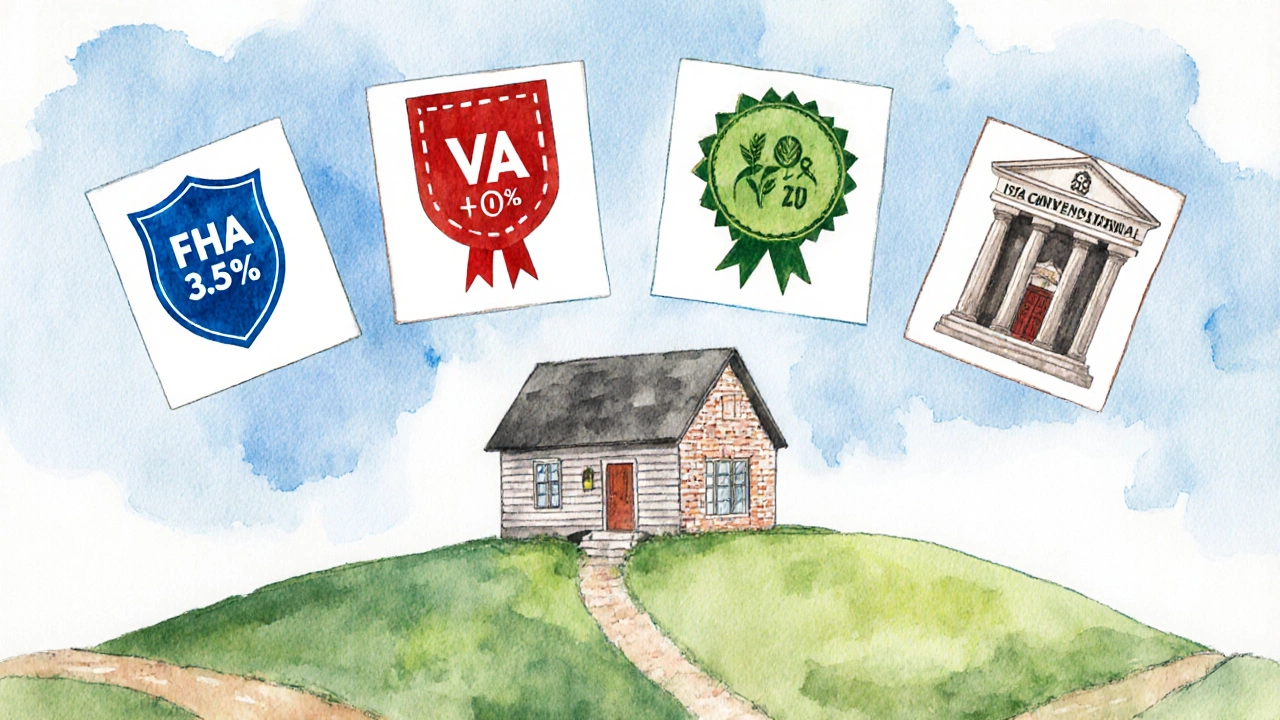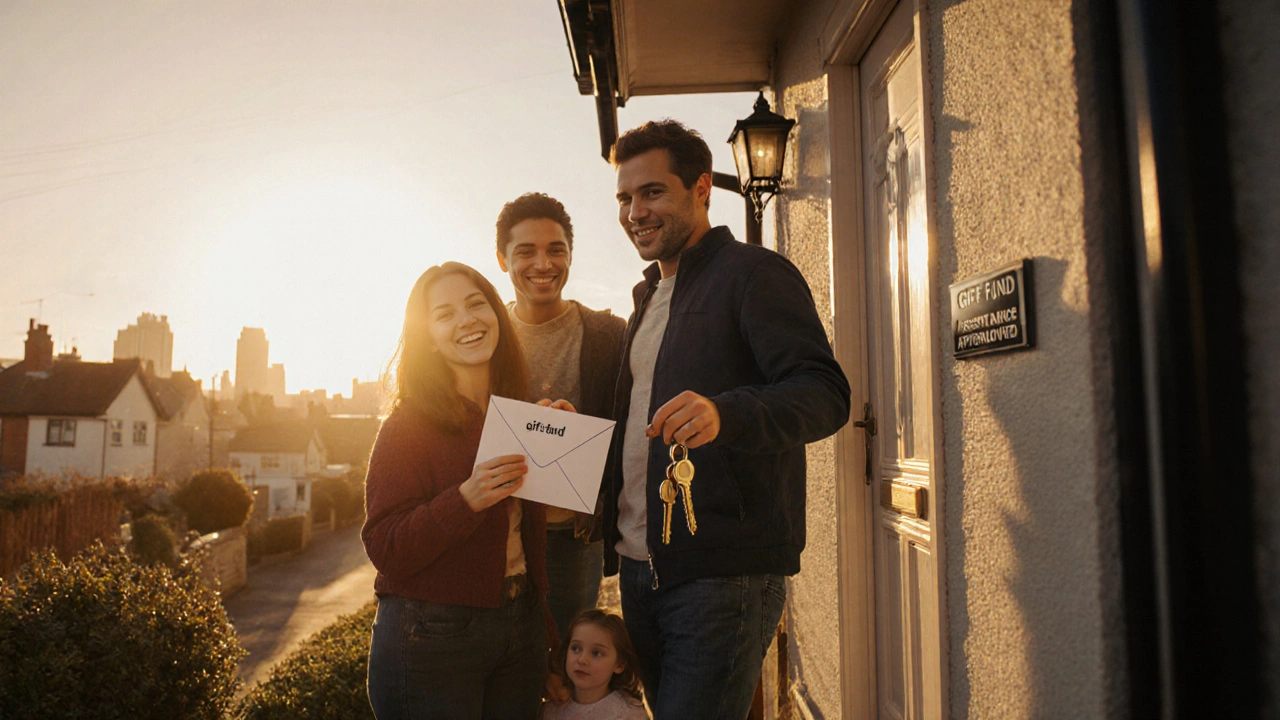Down Payment Calculator
First-Time Home Buyer Down Payment Calculator
Calculate your required down payment for 2025 based on home price and loan type
Your Down Payment Requirements
Recommended Loan Type
Note: This calculator provides estimates based on current 2025 lending standards. Actual requirements may vary based on lender policies, local market conditions, and individual circumstances. For the most accurate assessment, consult with a qualified mortgage professional.
Ever walked into a realtor’s office and felt the panic when they asked, "How much cash are you bringing to the table?" If you’re a first‑time buyer, that question can feel like a curveball. The good news? You don’t need a 20% pile of cash to become a homeowner in 2025. Below you’ll see the real numbers, the loan options that shape them, and practical ways to keep your out‑of‑pocket cost manageable.
First‑time home buyer is someone purchasing a residential property for the first time, often navigating financing, budgeting, and market dynamics without prior ownership experience typically wonders how much they must front as a down payment the initial cash contribution toward the purchase price of a home, expressed as a percentage of that price. Understanding the average, the range, and the levers you can pull makes that question less scary.
Key Takeaways
- Nationally, the median down payment for first‑time buyers sits around 6% of the home’s price.
- Government‑backed loans (FHA, VA, USDA) can lower the requirement to 3.5% or even 0% for qualified borrowers.
- Credit score, debt‑to‑income ratio, and local market conditions can shift the needed percentage by several points.
- Down‑payment assistance programs, gift funds, and piggyback loans can reduce cash outlay.
- Knowing the loan‑to‑value (LTV) ratio you’ll end up with helps you budget for private mortgage insurance (PMI) and closing costs.
What Exactly Is a Down Payment?
A down payment is the upfront equity you contribute toward buying a house. Lenders require it to ensure you have skin in the game, which reduces their risk. The amount you put down directly influences the loan‑to‑value ratio, or LTV the percentage of the property’s purchase price that is financed by the lender. A lower down payment means a higher LTV, which can trigger additional costs like private mortgage insurance (PMI) for conventional loans.
National Averages in 2025
According to the National Association of Realtors (NAR) and data compiled by the Mortgage Bankers Association (MBA), the median down payment for first‑time buyers in 2025 is 6% of the purchase price. That translates to $12,000 on a $200,000 starter home, $18,000 on a $300,000 property, and $30,000 on a $500,000 home. The median is a better guide than the mean because it filters out the outliers-few buyers putting down 0% and a handful splurging 20% or more.
Geography matters. In high‑cost metros like San Francisco or New York, the median climbs to about 8% because lenders see higher risk in pricey markets. In the Midwest and South, you’ll often find the median dipping to 4% or even 3% thanks to more aggressive lender programs and stronger local assistance.

How Loan Type Shapes the Down Payment
Not all mortgages are created equal. Your choice of loan determines the minimum down payment, the required LTV, and any additional costs.
| Loan Type | Minimum Down Payment | Typical LTV | Key Eligibility |
|---|---|---|---|
| FHA loan Federal Housing Administration‑insured mortgage that allows lower down payments and more flexible credit standards | 3.5% | 96.5% | Credit score ≥580, steady employment, primary residence |
| Conventional loan A mortgage not insured by the government, typically offered by banks or credit unions | 3% (with certain programs) to 5% for most first‑timers | 95%-97% | Credit score ≥620, debt‑to‑income ≤45% |
| VA loan Veterans Affairs loan that can offer 0% down for eligible service members | 0% | 100% | Eligible veteran or active‑duty service member, Certificate of Eligibility |
| USDA loan U.S. Department of Agriculture loan for rural properties with low‑to‑moderate income | 0% | 100% | Property in eligible rural area, income ≤115% of median |
Notice how government‑backed loans can bring the cash requirement down to zero. The trade‑off is usually a funding fee (VA) or mortgage insurance premium (FHA) that rolls into your monthly payment.
Factors That Push the Percentage Up or Down
Even within a single loan type, several personal and market variables affect how much you’ll need.
- Credit Score: A score above 740 can qualify you for the lowest down‑payment programs and better interest rates. Below 620, many lenders will demand at least 10% to offset risk.
- Debt‑to‑Income (DTI) Ratio: Lenders look at how much of your monthly income goes to existing debts. A DTI under 36% often unlocks lower‑down‑payment options.
- Property Price: In high‑price markets, even a 5% down payment can amount to a six‑figure sum, prompting buyers to seek assistance programs.
- Local Market Conditions: Hot seller’s markets may see sellers demand larger earnest money deposits, effectively raising your upfront cash need.
- Loan Limits: Conforming loan limits set by the FHFA cap the amount you can borrow without extra insurance. If you exceed the limit, you may need a larger down payment or a jumbo loan.
Smart Ways to Lower Your Out‑of‑Pocket Cost
Below are proven tactics that let you meet the required percentage without draining your savings.
- Gift Funds: Family members can contribute toward your down payment. Lenders typically require a gift letter stating the money is not a loan.
- Down‑Payment Assistance (DPA) Programs: Many states and municipalities offer grants or low‑interest loans that cover 2%-5% of the purchase price. Check local housing agencies or your realtor’s network.
- Piggyback Loans (80/10/10): Combine a primary mortgage with a secondary loan to keep your LTV below 80% and avoid PMI. This works best when you have strong credit.
- Seller Concessions: Negotiate for the seller to pay a portion of the closing costs, freeing up cash for the down payment.
- Community Lender Programs: Credit unions often have member‑only products with lower down‑payment thresholds.

Quick Checklist Before You Start House Hunting
- Run a free credit report and note your score.
- Calculate your DTI: (monthly debt payments ÷ gross monthly income) × 100.
- Determine a realistic budget based on a 6%-8% down‑payment range for your target market.
- Identify eligible loan types (FHA, VA, USDA, conventional) and collect required documents.
- Research local DPA programs and eligibility criteria.
- Set aside 1%-2% of the purchase price for closing costs and moving expenses.
Common Myths and Pitfalls
Myth 1: "You must have 20% to avoid PMI." Not true-most conventional loans allow PMI with as little as 5% down, though the monthly premium will be higher.
Myth 2: "Government loans are only for low‑income borrowers." While they target affordability, many middle‑income families qualify, especially with a solid credit profile.
Pitfall: Over‑borrowing on a low down payment and then facing unaffordable monthly payments. Always run a stress test: can you afford the payment if rates rise 1%?
Bottom Line
For most first‑time buyers in 2025, the cash you need to put down sits around first time home buyers down payment6% of the home’s price, but you can go as low as 0% with a VA or USDA loan. The exact figure hinges on loan type, credit health, and local market dynamics. By understanding these levers, planning ahead, and tapping into assistance programs, you can walk into a closing with confidence-not fear.
Frequently Asked Questions
What is the minimum down payment for an FHA loan?
The FHA program allows a minimum down payment of 3.5% of the purchase price, provided the borrower has a credit score of at least 580. Borrowers with lower scores can still qualify but must put down 10%.
Can I use gift money for a conventional loan down payment?
Yes, most conventional lenders accept gift funds as long as you provide a signed gift letter stating the money is a true gift and not a loan, and the donor can verify the source of the funds.
How does a higher down payment affect my mortgage rate?
Generally, a larger down payment reduces the lender’s risk, which can translate to a lower interest rate. The exact impact varies by lender, but a 10% increase in down payment can shave anywhere from 0.125% to 0.250% off the rate.
Do I still need to pay PMI if I put down 5% on a conventional loan?
Yes. Private Mortgage Insurance is required for conventional loans with less than 20% equity. The premium is typically 0.3%-1.0% of the loan amount per year, added to your monthly payment.
What are the biggest obstacles to qualifying for a zero‑down loan?
Eligibility hinges on military service (VA) or rural location and income limits (USDA). Even if you qualify, you’ll still face a funding fee (VA) or mortgage insurance (USDA) that adds to your monthly cost.
